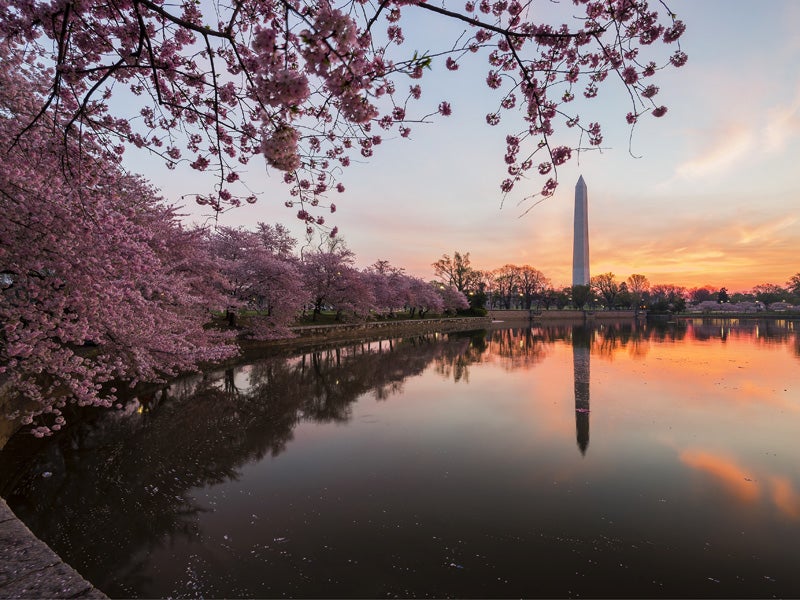Only in Congress Is Clean Water Controversial
This week, the EPA finalized a Clean Water Rule that will do much better to protect our nation's waterways.

This page was published 10 years ago. Find the latest on Earthjustice’s work.
Growing up in the Southern Appalachian Mountains of North Carolina, the streams and rivers were not only our source of clean drinking water, they were our playgrounds. As a kid, I roamed the forests and spent a lot of time in the creeks, especially where I could slide down slick rocks into cold pools.
It's a timeless pursuit for kids nationwide, and this summer, children all over the country will go outside to swim and splash in their local waterways, not only the creeks of the North Carolina mountains, but also the shores of Chesapeake Bay and Lake Erie, all the way to the rivers of the Sierra Nevada in California.
All this swimming can turn into an alarming prospect when you consider that more than 55 percent of our nation's streams and rivers are in poor condition, unfit for swimming, drinking, or fishing. The EPA's annual scientific assessment of the state of our streams and rivers shows a troubling trend of worsening water quality across the United States. At our current rate of water pollution and contamination, kids today may not be able to enjoy summers outside in waters the way their parents have.
Even more urgently, in the last decade, the drinking water sources for 117 million Americans have come under threat. The nation's primary water law, the Clean Water Act was passed to prevent this, but thanks to some misguided court decisions and some dirty-water and polluter-friendly loopholes, more than 207,000 miles of streams are completely vulnerable to dumping and pollution, stripped of federal protections leaving local folks who depend on those streams with little if any legal recourse.
This week, the EPA finalized a Clean Water Rule to do much better to protect our nation's waterways. The Clean Water Rule is a commonsense plan to make clean water a priority by protecting the sources that feed the drinking water for more than 117 million Americans. It is supported by the public, local elected officials, small businesses, craft brewers, and, crucially, by an overwhelming scientific record. More than 800,000 Americans have called for the Administration to finalize this plan; 87 percent of all the public comments on this rule support its adoption. Over the past decade, millions more have supported efforts to apply the Clean Water Act to all streams and wetlands in order to protect clean water.
When the entire drinking water supplies for the cities of Toledo, Ohio, and Charleston, West Virginia, were shut down in 2014 due to pollution and contamination, hundreds of thousands of Americans felt the stakes of life without clean water. We can't afford to lose clean water for hundreds of millions.
The Clean Water Rule will protect the drinking water of one in three Americans and will bring $388 million to $514 million in annual benefits to the public. This includes benefits from reducing flooding, filtering pollution, providing wildlife habitat, supporting hunting and fishing, and recharging groundwater.
Polluting industries who prioritize ease of dumping their waste into waterways over your clean drinking water or your family's recreation are calling this rule "overreach." They are promoting myths and mistruths about the rule, aiming to distract the public from the important work of cleaning up our waterways with politics and spin. They are also lining up their cohort in Congress to block this rule.
So whom to believe? Look around you. Let your local waterways be your guide here. Are any of them struggling from pollution problems? Could they use some cleaning up? Do they deserve at least a little protection from dumping? If you don't know about your local water quality, check here, but statistically speaking, everyone in this country lives near some gravely polluted waters or drinks from a threatened water source. There is no one here safe from this problem.
Ultimately, if we want to fill our glasses with clean water, and if we want our kids to swim, fish, or play safely in our waters, we have to be willing to protect our all nation's waters, large and small, from the Great Lakes to the headwater streams. This should not be a partisan issue. We applaud the Obama administration for taking this critical step amid such tremendous industry pressure and urge the EPA to do even more to protect our clean water.
This blog was originally posted by The Huffington Post on May 29, 2015.